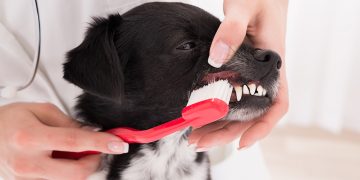Dog Eye Health Tips
Just like their human owners, eye care is vital to keep dogs healthy. While older dogs may be prone to more eye diseases, young dogs are not immune. Understanding different dog eye infections and diseases and knowing how to treat them is important to keep their vision healthy for years to come.
Signs and Symptoms of Dog Eye Problems
Dog eye disease can be prevented or controlled if it is spotted in time. Recognizing the common ailments of the eye is an important first step to prevent future problems:
- Pink eye, or conjunctivitis, is the most common dog eye infection. It can be either bacterial or viral. It is marked by increased eye discharge, pinkness around the eye area and swelling or irritation.
- Canine cataracts, like the human version, will worsen over time and eventually lead to blindness if left untreated. The pupil will appear white or cloudy.
- Canine glaucoma is generally found in middle-aged and older dogs. A blockage in the drainage system of the eye leads to pressure and eventual blindness if left untreated. Symptoms include swelling, soreness and a cloudy appearance.
You May Also Like:
Related Search Topics (Ads):
Treating Dog Eye Diseases and Infections
Canine cataracts usually need to be removed surgically by a veterinarian, though the vision rarely will return to full strength. For glaucoma, sometimes a pill or eye drop is used to alleviate the blockage causing the problem. In other cases, surgery may be necessary to ensure dog eye health. For glaucoma, immediate treatment is important, as the disease can quickly lead to blindness.
If pinkeye is left untreated, it can cause a perforated cornea, which is painful and may lead to blindness in rare cases. Pink eye is usually treated with antibiotic drops, and in some cases oral antibiotics as well. A warm compress on the eye can help ease pain and itching. It is important that the dog does not scratch or paw at the infected eye, as this can lead to further complications.
Dog eye problems can easily be alleviated or cured if they are discovered before permanent damage occurs. Proper dog eye care and prevention can aid in discovering eye disease early on, so it is always best to regularly wipe discharge away from the eyes and examine them for signs of disease and infection.

